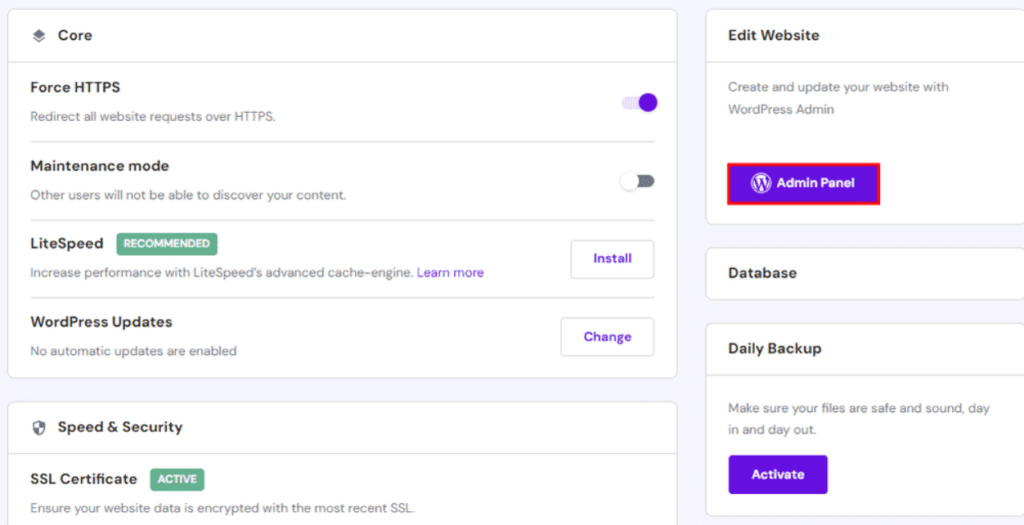This step by step guide on How to start a blog in 2025 will help you kickstart your blogging journey in no time and create a passive income stream.
Starting a blog in 2025 is one of the best ways to share knowledge, build a personal brand, or even generate passive income.
Let’s dive into a step-by-step guide to help you get started.
In this guide, you’ll learn:
- 7 Steps to start a blog in 2025
- Set up a blog from scratch, including domain and design essentials.
- How to Generate content?
- Implement essential SEO tactics to boost your blog’s visibility.
- Monetize your blog effectively.
Ready to jump in?
Let’s get started!
What is Blogging?
Blogging is the practice of publishing regular content, typically in the form of articles, on a website or platform. Topics can range widely, from personal stories to professional insights or niche information.
Blogs offer readers valuable insights, how-to guides, or entertainment, and provide bloggers with a platform to connect, share, and build a community. Blogging can also be an income source through various monetization methods like ads, affiliate links, and sponsorships.
Should You Start a Blog in 2025?
Absolutely! Blogging in 2025 is still relevant, and the opportunities to grow and monetize are better than ever.
With AI tools for streamlined content creation and for humanized content, it’s easier to produce high-quality posts even if you’re short on time.
The demand for well-written, engaging content continues to grow, making it a prime time to start a blog if you want to build a personal brand, earn passive income, or simply share your passions.
Step 1: Choose the Right Hosting Provider
The first step in this how to start a blog in 2025 is to choose the right hosting.
Your hosting provider is the backbone of your blog’s performance, speed, and security.
Here are two popular choices for 2025:
Hostinger:
Known for its reliability and speed, Hostinger is ideal for beginners and experienced bloggers.
Bonus: Use this exclusive link to get up to 80% off, making it one of the most affordable options for new bloggers.

As can you see, there’s a huge 80% discount that means you’re getting a free domain and very cheap hosting plan.
2. InMotion Hosting:
- If you need robust performance and customer support, InMotion Hosting is another excellent choice.
- They offer flexible plans with strong customer support, ideal for scaling as your blog grows.
Step 2: Select Your Blog’s Niche and Domain Name
Choosing the right niche and domain name is critical to your blog’s success.
Identify Your Niche:
Focus on a niche you’re passionate about, whether it’s technology, fashion, finance, or personal development.
Many people search for the Most Profitable Blogging Niches but honestly these are ones that have high competition too. So, you’ll have to work your as — off to rank on google.
Use keyword research tools like Google Trends or Google Keyword Planner to see what’s trending and relevant in your niche.
Choose a Domain Name:
- Keep it short, memorable, and relevant to your content.
- Use a domain name checker (often provided by hosting platforms like Hostinger) to ensure availability.
Step 3: Set Up Your Blog with WordPress
For most bloggers, WordPress is the platform of choice due to its flexibility, ease of use, and SEO-friendliness.
Install WordPress:
Most hosting providers, including Hostinger and InMotion, offer one-click WordPress installation.
I assume you have selected Hostinger, you can install WordPress following these steps.
Login in to Hostinger, click on the manage button in front of your domain.
In your hPanel, go to Website → Auto Installer and select WordPress from the list of applications.

Enter your website title, email, username, and password for your WordPress admin account.

Once done, click Next. Select the language preferences and then click done.
Once done, you’ll a page like this.

Click on the admin panel and it’ll take you directly to WordPress Dashboard.
Choose a Theme:
- Go for a clean, responsive theme that aligns with your brand. There are free and paid options within the WordPress dashboard.
- Tip: Responsive themes help with mobile optimization, a must-have feature in 2025.
Install Essential Plugins:
- Yoast SEO or Rank Math: For optimizing content for search engines.
- Jetpack: For site performance, security, and marketing tools.
- Google Analytics: To track traffic and monitor your blog’s growth.
Step 4: Generate High-Quality Content
Creating quality content is what will set your blog apart.
If you have a passion for writing, then I will recommend you to write the blogs yourself.
But, I know it’s a time consuming process so you have to leverage AI to automate the process.
These are the couple of AI tools I’d recommend that can help you generate the content quickly and make the content creation process easy and effective.
Blogify AI:
With Blogify AI, you can turn almost any media into blog content. It can transform videos, PDFs, audio files, and even web pages into a fully structured blog post, saving you time and effort.
This tool is excellent for bloggers looking to quickly generate ideas or convert research materials into content.
It also allows you to connect your YouTube Channel and automatically generate blogs from the videos you post.
That’s pretty awesome, right!
StealthWriter AI:
StealthWriter AI is a great tool to humanize AI-generated content, making it feel more authentic and natural.
After generating content with Blogify AI, run it through StealthWriter to ensure it resonates well with readers and maintains a personal tone.
I have created this step by step guide on How to bypass AI content detection using Stealthwriter AI
One thing I like about this tool is that it can bypass ai content detection from power tools like GPT Zero.
Take a look at how you can bypass AI content detection using this tool.
Step 5: Optimize Your Content for SEO
Search Engine Optimization (SEO) is essential to getting your blog content seen on search engines like Google. Follow these key on-page SEO steps for each blog post:
Keyword Placement:
Place your main keyword in the title, first 50–100 words, H2 headers, and alt text of images to help search engines understand the topic.
Internal Linking:
- Link to other posts on your blog to improve SEO and provide a better user experience.
External Links:
Link to credible sources to enhance the trustworthiness of your content.
Meta Description:
Write a concise, engaging description with your target keyword to improve your post’s click-through rate.
Following this template will help make your content SEO-friendly.
Step 6: Promote Your Blog and Build an Audience
Getting traffic to your blog requires promotion. Here are some effective ways to get started:
Social Media:
- Share your posts on platforms like Twitter, Instagram, and Pinterest. Choose networks that align with your audience.
Email Marketing:
- Build an email list early and send out newsletters with links to your latest blog posts.
- Use a tool like Mailchimp or ConvertKit to manage subscribers and automate emails.
Guest Blogging:
- Reach out to other bloggers in your niche for guest blogging opportunities. It’s a great way to increase exposure and gain backlinks for SEO.
Step 7: Monetize Your Blog
Once you have a steady flow of traffic, you can start earning from your blog. Here are some popular monetization methods:
Affiliate Marketing:
- Promote products relevant to your niche. When users click your link and make a purchase, you’ll earn a commission.
Ad Revenue:
- Apply to ad networks like Google AdSense to display ads on your blog.
Sponsored Posts:
- As your blog grows, companies may reach out to sponsor content on your blog.
Sell Digital Products:
- Create and sell digital products like e-books, online courses, or printables related to your niche.
Final Thoughts
Starting a blog in 2025 doesn’t have to be overwhelming. With the right hosting provider, content tools, and SEO practices, you can create a blog that stands out. Remember to stay consistent with your content, optimize for SEO, and use helpful tools like Blogify AI for content generation and StealthWriter AI for naturalized content.
In the comments below, let me know which blogging niche do you plan on choosing.
FAQs
1. How can a beginner start blogging?
- Starting a blog as a beginner is simple. First, select a topic you’re passionate about or knowledgeable in. Choose a blogging platform like WordPress and set up hosting through providers like Hostinger or InMotion Hosting. Design your blog with a theme that matches your style, write your first post, and publish it. Remember, consistency and quality content are key!
2. Do bloggers get paid?
- Yes, many bloggers earn money through methods like affiliate marketing, ad revenue, sponsored content, and selling digital products. Earnings depend on the blog’s traffic, audience engagement, and monetization strategies. With time and dedication, blogging can be a profitable venture.
3. How do I start a blog for free?
- To start a blog for free, use platforms like WordPress.com or Blogger, which offer free basic hosting and themes. You won’t have as much control over customization, but it’s a great way to learn blogging fundamentals without financial investment. Later, you can upgrade to a paid plan to unlock more features.
4. How to start a blog introduction?
- A blog introduction should be clear and engaging. Start by briefly explaining the topic of your blog and what readers can expect. Share your personal interest or experience in the topic to connect with readers and provide a sneak peek of the value they’ll find in your blog posts.
5. How much money per 1000 views on a blog?
- Earnings per 1000 views vary widely based on factors like niche, ad network, and audience demographics. On average, bloggers might earn between $1 to $10 per 1000 views through ad networks like Google AdSense. You can earn a lot more, if you integrate affiliate products. Blogs with strong engagement or higher-paying niches can earn more.
6. How to start a blog for beginners?
- For free, you can use blogger, wordpress or platforms like medium. If you have minimal investment, start by choosing a hosting provider like Hostinger (with discounts up to 80% if you use this link). Select a user-friendly platform like WordPress, choose a theme, and set up essential plugins. Begin by posting valuable, relevant content for your target audience and promoting it on social media to attract readers.
7. What’s the best hosting provider for beginners?
- Hostinger is a great choice for beginners due to its affordability and ease of setup. InMotion is also a solid option if you need strong customer support and scalability.
8. Can I use AI to create blog content?
- Yes! Tools like Blogify AI can generate blog content from various media sources, and StealthWriter AI can humanize it to keep it engaging and authentic.



